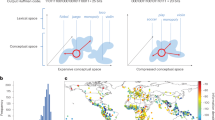Abstract
It is well known that electromagnetic radiation—radio waves—can in principle be used to communicate over interstellar distances1,2. By contrast, sending physical artefacts has seemed extravagantly wasteful of energy, and imagining human travel between the stars even more so3,4. The key consideration in earlier work, however, was the perceived need for haste. If extraterrestrial civilizations existed within a few tens of light years, radio could be used for two-way communication on timescales comparable to human lifetimes (or at least the longevities of human institutions). Here we show that if haste is unimportant, sending messages inscribed on some material can be strikingly more energy efficient than communicating by electromagnetic waves. Because messages require protection from cosmic radiation and small messages could be difficult to find among the material clutter near a recipient, ‘inscribed matter’ is most effective for long archival messages (as opposed to potentially short “we exist” announcements). The results suggest that our initial contact with extraterrestrial civilizations may be more likely to occur through physical artefacts—essentially messages in a bottle—than via electromagnetic communication.
This is a preview of subscription content, access via your institution
Access options
Subscribe to this journal
Receive 51 print issues and online access
$199.00 per year
only $3.90 per issue
Buy this article
- Purchase on Springer Link
- Instant access to full article PDF
Prices may be subject to local taxes which are calculated during checkout

Similar content being viewed by others
References
Cocconi, G. & Morrison, P. Searching for interstellar communications. Nature 184, 844–846 (1959)
Schwartz, R. N. & Townes, C. H. Interstellar and interplanetary communication by optical masers. Nature 190(4772), 205–208 (1961)
Purcell, E. W. Radio astronomy and communication through space. In Interstellar Communication Ch. 13 (ed. Cameron, A. G. W.) 121–143 (Benjamin, New York, 1963)
Pierce, J. R. Relativity and space travel. Proc. IRE 47, 1053–1061 (1959)
Cover, T. M. & Thomas, J. A. Elements of Information Theory 247–250, 187–189 (Wiley-Interscience, New York, 1991)
Skolnik, M. Introduction to Radar Systems 6.2–6.5 (McGraw-Hill, New York, 2002)
Townes, C. H. At what wavelengths should we search for signals from extraterrestrial intelligence? Proc. Natl Acad Sci. 80, 1147–1151 (1983)
Eigler, D. M. & Schweizer, E. K. Positioning single atoms with a scanning tunnelling microscope. Nature 344, 524–526 (1990)
Landauer, R. Minimal energy requirements in communication. Science 272(5270), 1914–1918 (1996)
Mileikowsky, C. F. et al. Natural transfer of viable microbes in space: from Mars to Earth and Earth to Mars. Icarus 145, 391–427 (2000)
Bussard, R. W. & DeLauer, R. D. Fundamentals of Nuclear Flight 16–21 (McGraw-Hill, New York, 1965)
Stuhlinger, E. Ion Propulsion for Space Flight (McGraw-Hill, New York, 1964)
Papagiannis, M. Are we alone or could they be in the asteroid belt? Q. J. R. Astron. Soc. 19, 277–281 (1978)
Crick, F. H. C. & Orgel, L. E. Directed panspermia. Icarus 19, 341–346, (1973)
Bracewell, R. Communication for superior galactic communities. Nature 187, 670–671 (1960)
Acknowledgements
We thank G. Foschini, G. Gonzalez, P. Herry, P. Morrison, P. Shor and S. Tournpis for their comments on an earlier version of the manuscript. This work was supported, in part, by the National Science Foundation.
Author information
Authors and Affiliations
Corresponding author
Ethics declarations
Competing interests
The authors declare that they have no competing financial interests.
Supplementary information
Rights and permissions
About this article
Cite this article
Rose, C., Wright, G. Inscribed matter as an energy-efficient means of communication with an extraterrestrial civilization. Nature 431, 47–49 (2004). https://doi.org/10.1038/nature02884
Received:
Accepted:
Issue Date:
DOI: https://doi.org/10.1038/nature02884
This article is cited by
Comments
By submitting a comment you agree to abide by our Terms and Community Guidelines. If you find something abusive or that does not comply with our terms or guidelines please flag it as inappropriate.



